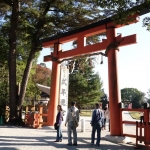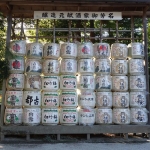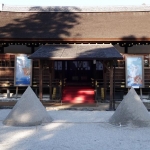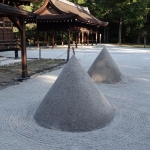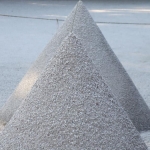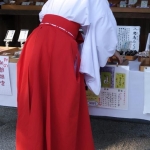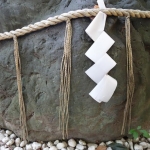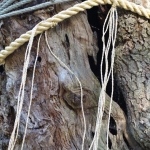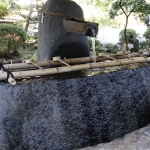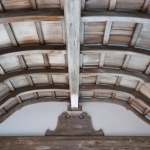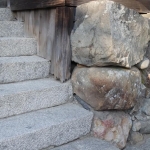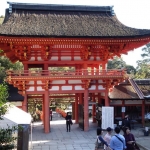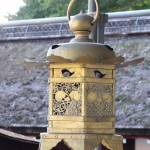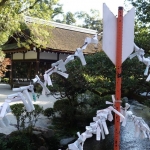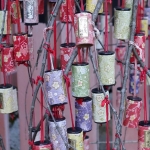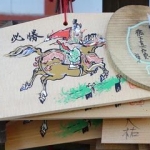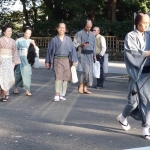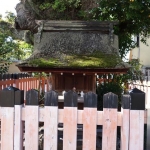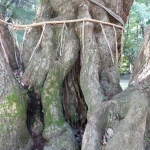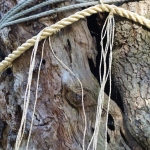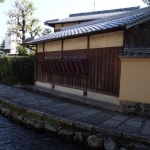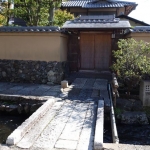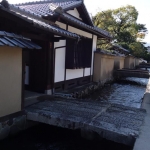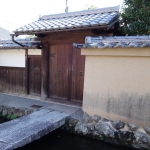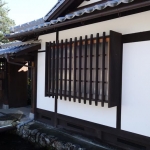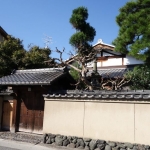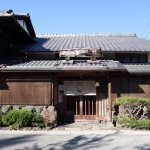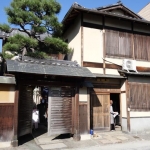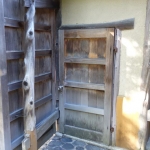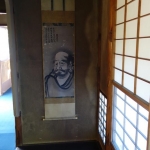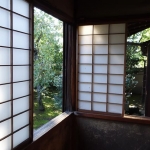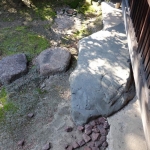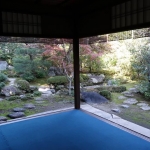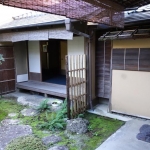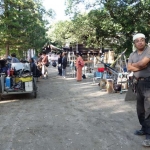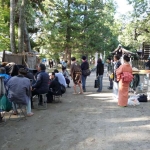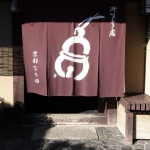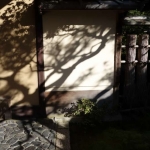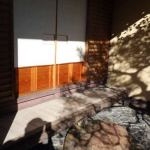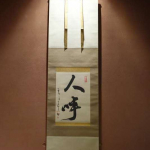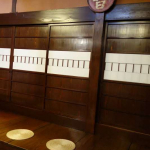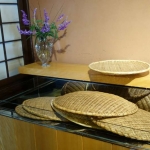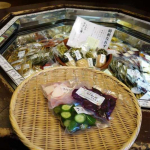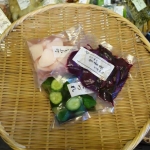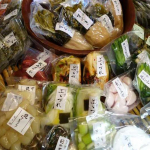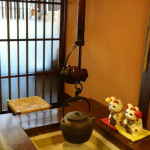Kamigamo-jinja
How perfectly right––
behind the shrine-maiden’s house,
a blossoming plum
–Bashō
Red: Places of Interest Blue: Eat Green: Sleep
The Kamo Shrines, Shimogamo Shrine and Kamigamo Shrine, are both recognized as UNESCO World Heritage Sites. They are two of the most important and oldest shrines in Kyoyo.
In fact, the Kamo Shrines even predate the city’s establishment as national capital in 794. Throughout the thousand years that Kyoto served as Japan’s capital city, the Imperial Court patronized the shrines as establishments dedicated to the city’s protection and prosperity.
Kamo-wake-ikazuchi-Jinja in the Kita Ward of Kyoto is the oldest Shinto shrine in the ancient city. Since prehistoric times Kamigamo-jinja has preserved and transmitted the legends relating to the birth of the shrine deity, Wakeikazuchi.
Ancient rituals which transmit faith in the divine mountain, Kamo Sai, also known as Aoi Matsuri, started during the reign of Emperor Kinmei in 544. The shrine buildings retaining the style of the early Heian Period, all convey the history of the province of Yamashiro (southern Kyoto Prefecture).
Most of the shrine complex has been designated as a Preservation Area of Historic Landscape by the municipal government and as a Historic Site by the national government. The area contains many large trees such as ichii oaks, suda chinquappins and weeping cherry trees.
Kamigamo Jinja lies up against the northern hills, in a quiet residential area of Kyoto, and is therefore often less-crowded than shrines in the city centre, though no less impressive.
Kamigamo Shrine is about one hundred years younger than its sister shrine, Shimogamo Jinja. In fact Kamigamo and Shimogamo are the upper and lower halves of the same shrine.
Both shrines were built by the powerful Kamo family who ruled over this area of mainly immigrants from the Korean Peninsula. During the 17th century over 275 households of descendants of the Kamo were living in the area, formed a shake-machi (社家町), a local association to protect and handle the affairs of Kamigamo Shrine.
Kamo Sai, the correct name for Aoi Matsuri, one of the 3 major festivals of Kyoto, ends here after beginning in the Imperial Palace and passing through Shimogamo Shrine. Aoi Matsuri features displays of horsemanship on the grass before the main shrine buildings.
One approaches the shrine across a large open space that is lawn, rather than the more usual gravel, and this gives Kamigamo Shrine the feel of a park.
The most unusual thing about Kamigamo Shrine is the two large sand cones that flank the entrance to the main shrine building – the Haiden. Known as Tatesuna, opinion differs as to their original meaning, but the most commonly accepted is that they represent the sacred mountain just to the north of the shrine. Small cones of salt outside restaurant entrances are said to derive from the Tatesuna. Another theory is that they were used to sprinkle on the paths leading to the shrine to purify them when a member of the nobility came to pray.
On September 9th the shrine holds the Crow Sumo ceremony (Karasu-zumo), where young boys from the neighborhood compete at sumo to entertain the gods. Before the sumo, shrine priests perform rituals while emulating the call and movements of crows, hence the name.
Entrance to the shrine is free, but at 9.30am most mornings there is a short tour of the shrine including a purification ritual for which a 500 yen “donation” is asked.
With advance notice, groups can book a tour of the shrine and lecture in English, plus view some of the shrines treasures not normally open to the public.
This is a location for samurai films and is also a popular place for traditional Japanese weddings.
The street called Kamigamo Hon-dori goes all the way to Kamigamo Shrine. You will come to a point where an ancient tree is surrounded by a red fence at the point where the stream splits. This point is called Fujikisha where a gigantic Kusunoki tree around 500 years old is enshrined as a Shinboku (a sacred tree).
For more details, go to http://www.kamigamojinja.jp/english/
Nishimura-Ke
The residence is open daily from March to December with admission 500 yen. The nearby Umetsuji Residence is open daily from July-September.
When the Imperial capital moved to Heiankyo (present day Kyoto) the Kamo shrines enjoyed Imperial patronage and support that has continued to the present day.
Ota Shrine
Ota-jinja Shrine is an auxiliary shrine of Kamigamo Shrine, dedicated to Ame-no-Uzume.
This temple is famous for its irises that bloom on the floating island that used to be a part of Ota marsh. It is designated as an Important Natural Monument. The flowers bloom in the end of May and many people come to see them. The pond was mentioned in the Heian Period’s (794-1185) “Waka Poetry” and its beauty remains unchanged ever since.
Narita Pickle Shop
A tsukemono, or Japanese pickles, shop close to Kamigamo Shrine attracts many people for their special pickles called Suguki. Suguki pickles that you can get today are made using the traditional method that started in Edo period (1603-1868). It’s a specialty pickle of the Kamigamo Shrine area, and the one from Narita is a brand-named delicacy. In the 90’s, Suguki was discovered to have a particular type of bacteria called Labelle. Labelle Bacteria is said to strengthen one’s immune system. Although depending on the season, the shop carries about 40 different types of pickles other than Suguki pickles. The inside of the store is nice even just to walk in.
Important: For seasonal vegetables, the products are sold for limited time only. If there is a label with 「期間限定」which indicates, “limited time only”. If you are thinking of bringing some pickles back to your home country, ask if room-temperature, or “jyo-on” (常温), storage is ok.


